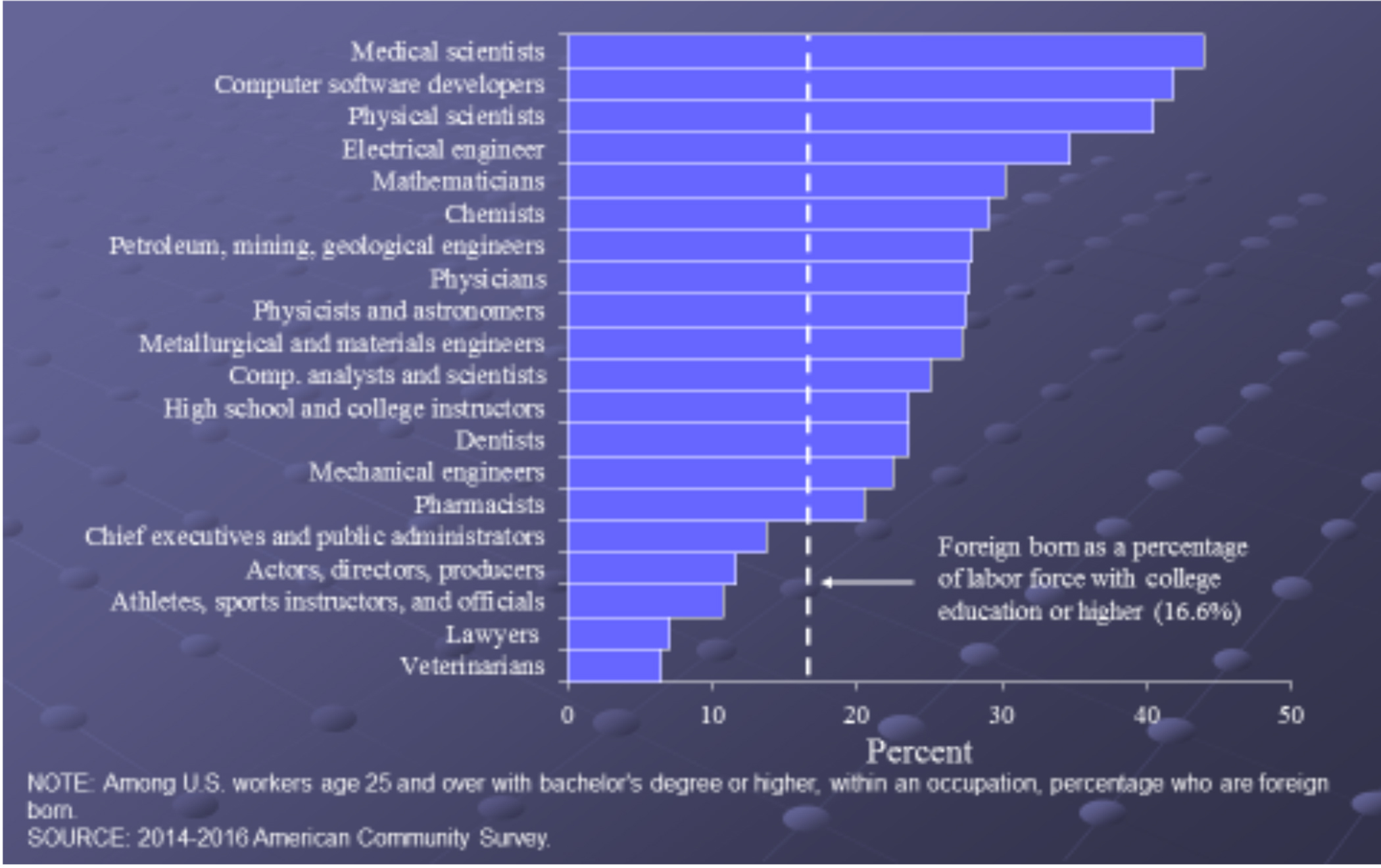- Energy & Environment
Introduction
International migration has been steadily increasing in every region of the globe since the end of the Second World War. In 2017, approximately 258 million people reside outside of their country of birth (3.4 percent of the world’s population) and over the past half century, individual mobility has increased at a steady pace. Tens of millions of people cross borders on a daily basis, which adds up to roughly two billion annually. International mobility is part of a broader trend of globalization, which includes trade in goods and services, investments and capital flows, greater ease of travel, and a veritable explosion of information. While trade and capital flows are the twin pillars of globalization, migration is the third leg of the stool on which the global economy rests.1
Clearly, migration is a defining feature of the global era in which we live. It is in many ways connected to trade and investment, yet it is profoundly different. People are not shirts, which is another way of saying that labour is not a pure commodity. Unlike goods and capital, individuals can become actors on the international stage (they have agency) whether through peaceful transnational communities or violent terrorist/criminal networks. In the rare instances when migrants commit terrorist acts, migration and mobility can be a threat to the security of states. However, the benefits of migration far outweigh the costs. Immigrants bring labour, human capital, and new ideas and cultures (diversity) to their host societies; and in liberal democracies, they come with a basic package of (human and civil) rights that enables them to settle and become productive members of society, if not citizens of their adoptive countries. Conversely, they may return to their countries of origin where they can have a dramatic impact on economic and political development.2
Lest we forget, not all migration is voluntary—in any given year millions of people move to escape political violence, hunger, and deprivation, becoming refugees, asylum seekers, or internally displaced persons. In 2017 the number of “persons of concern” to the United Nations High Commissioner for Refugees (UNHCR) was 65.6 million, including 22.5 million refugees, 2.8 million asylum seekers, and 40.3 million internally displaced people. Wars in the Middle East (especially Syria and Iraq), East and West Africa, and instability in South Asia and Central (Northern Triangle) and Latin America (Venezuela) continue to feed a growing population of forced migrants. Among the most recent and fastest exoduses of people from their place of origin were the movement of Rohingyas from the Rakhine State in western Myanmar into neighbouring Bangladesh, and Venezuelans fleeing political instability and economic deprivation (almost four million to date). Europe (as in the European Union) and Germany, in particular, struggled to cope with waves of forced migration—almost 1 million asylum seekers arrived in Germany alone in 2015. In 2018-19, tens of thousands of Central Americans fled the Northern Triangle countries, most heading north to seek asylum in the United States Because it is so complex and multi-faceted, migration of all types poses a challenge for individual states, for regions like the European Union (EU) and for the international community as a whole.3
Four factors drive migration policy—security, cultural and ideational concerns, economic interests, and rights. National security—the institutions of sovereignty and citizenship—economics (markets) and rights are all part of a multi-dimensional game in migration policymaking. In ‘normal’ times, the debate about immigration revolves around two poles: markets (numbers) and (status) rights, or how many immigrants to admit, with what skills, and what status? Should migrants be temporary (guest) workers, allowed to settle, bring their families, and get on a ‘path to citizenship?’ Is there a trade-off between rights and numbers (markets) as Martin Ruhs and others suggest?4 All good questions—but cultural concerns (where should the immigrants come from, which regions of the globe, with which ethnic characteristics, and issues of integration) often trump markets and rights, and the trade-offs are more intense in some periods and in some countries than in others.
With the September 11, 2001, terrorist attacks in the United States and again with the November 13, 2015, attacks in Paris, France, immigration and refugee policymaking has been dominated by a national security dynamic (with a deep cultural subtext, fear of Islam) and the concern that liberal migration policies pose a threat to the nation and to civil society. In times of war and political crises, the dynamic of markets and rights gives way to a culture-security dynamic and finding equilibrium (compromise) in the policy game is much harder—this is the policy dilemma facing leaders in the United States and across the globe.
The four-sided game (see Figure 1) is difficult at the national, state and local levels, and it is rendered more complex by virtue of the fact that migration control has important foreign policy implications. The movement of populations affects international relations and security in myriad ways. Hence, political leaders are always engaged in a two- or even three-level game,5 seeking to build local and domestic coalitions to maximize support for policy but with an eye on the foreign policy consequences.
The Historical Context: E Pluribus Unum
In 2004 one of the most respected political scientists of his generation, Samuel P. Huntington of the “clash of civilizations” fame, published what would be his final major work, a book entitled Who Are We? The Challenges to America’s National Identity. In this book, Huntington argued that American national identity, and by extension, U.S. national interests are threatened by a growing wave of Hispanic immigration. He asserted that Mexican immigrants in particular are engaged in “la reconquista” or a re-taking of territory lost during the Mexican-American War—not through military conquest but through a peaceful “invasion,” the result of which has been to undermine Anglo-Protestant (Puritan) values of hard work, loyalty to the “founding principles” of the U.S. Constitution, and rule of law. Huntington decried the wave of undocumented immigration of impoverished and poorly educated Mexicans and Central Americans, the rise of dual nationality, bilingualism, and what he sees as the loss of a clear national identity and purpose—all the result of too much immigration. He begins the book by outlining three waves of immigration in U.S. history, first in the mid-19th Century with the Irish and Germans and continuing through the late 20th and early 21st centuries with Hispanics and Asians. He omits the first wave of immigration from the British Isles in the 17th and 18th centuries, because he views this wave as a period of settlement and founding during which the new American nation was forged with a fundamentally Anglo-Puritan outlook.
Huntington’s argument underscores the enduring controversy over immigration as a force shaping and reshaping American society. His critics accuse him of being a latter-day nativist and “know nothing,”6 echoing the controversy in earlier periods of American history when immigration was seen as a threat to basic “American” values. In the 18th Century, for example, Benjamin Franklin was very concerned about German immigration in Pennsylvania, because he thought that uneducated German peasants who were coming from a semi-feudal society had little understanding of what it was like to live in a Republic based on rule of law and individual liberty. Later in his political career Franklin changed his views on German immigration, as German-Americans became an increasingly important part of the electorate in Pennsylvania; and less than two centuries later a descendant of those German immigrants, Dwight Eisenhower, was elected President of the United States. It is important to keep in mind that immigration from the colonial period through the Civil War and Reconstruction (roughly the first hundred years of U.S. history) was controlled by the individual states, to the extent that it was regulated at all. Immigration was largely driven by the demand for labor to fuel the fires of industrialization—as in later periods private employers were instrumental in recruiting immigrants—by westward expansion, and by a seemingly unlimited supply of labor displaced by the industrial revolution and the concomitant rural exodus in Western Europe.
In The American Kaleidoscope: Race, Ethnicity, and the Civic Culture (1990) Lawrence H. Fuchs argued that three ideas have dominated the American approach to immigration and citizenship. They are the Massachusetts and Virginia models, dating from the early colonial period, and the Pennsylvania model, which took shape in the early years of the Republic. He admits that these are ‘ideal types,’ but he contends that traces of each model can still be found in contemporary debates. The Massachusetts model most closely conforms to Samuel Huntington’s ideal of Anglo-Puritanism (what might be called a White Anglo-Saxon Protestant or WASP view of American national identity). In this view immigrants are to be welcomed if they are willing to assimilate, learn English, and adopt the dominant religion and culture. In colonial Massachusetts that meant conformity to ascetic Puritan ideals, and Samuel Huntington, who lived on Beacon Hill and spent most of his career at Harvard, clearly wanted to make respect for Anglo-Puritan values the basis for selecting and naturalizing immigrants.
The Virginia model revolves around the demand for labor. In the early colonial period (17th and 18th centuries) the Virginia and Carolina planters needed stoop labor to pick tobacco and cotton. They acquired this labor initially through coercion—the impressment of Native Americans and the enslavement of Africans brought to the New World in bondage. Since both groups were considered to be sub-human, no thought was given to their naturalization and assimilation. Indeed, many Europeans were brought to work on the plantations and in shops and factories as indentured servants with limited rights. We hear echoes of the Virginia model in contemporary debates about guest worker programs whereby foreigners are brought to the United States as bonded labor on a temporary basis with no right to settle or naturalize.
Finally, the Pennsylvania model, which Fuchs sees prevailing in the Nationality Act of 1790 establishing a uniform rule of naturalization, calls for equal treatment of newcomers, welcoming them to settle, live, and worship as they see fit so long as they respect the law and the basic values of the Republic. It should be noted that the same act limited naturalization to ‘free white persons of good moral character,’ thus enshrining race (and to some extent class as it excluded indentured servants) into U.S. immigration law. Still the first President of the Republic, George Washington, reflected an expansive ideal of citizenship when he said, “the bosom of America is open to receive not only the Opulent and respectable Stranger, but the oppressed and persecuted of all Nations and Religions; whom we shall welcome to a participation of all our rights and privileges.”
The Pennsylvania model was reinforced after the Civil War with the ratification in 1868 of the Fourteenth Amendment to the Constitution, which extended citizenship to “all persons born or naturalized in the United States.”7 The Amendment was intended primarily to overturn the Dred Scott decision of the Supreme Court (1857) and to grant citizenship to former slaves, but in the process, it codified birthright citizenship with far-reaching implications for immigration policy. Barely two decades after the end of the Civil War, the Statue of Liberty—a gift from one fledgling Republic, France, to another, the United States—was erected in New York harbor (1886); and it would become the most visible symbol of an open and tolerant America, welcoming immigrants from the four corners of the globe. Inside the pedestal of the statue is inscribed the most famous immigration sonnet in American history, The New Colossus, by Emma Lazarus, which reads in part
“Give me your tired, your poor,
Your huddled masses yearning to breathe free,
The wretched refuse of your teeming shore.
Send these, the homeless, tempest-tost to me,
I lift my lamp beside the golden door!”
All three “models” have been present historically in debates over immigration and citizenship, which have followed the unofficial national motto, e pluribus unum (out of many, one). At times, Americans, like Samuel Huntington, have been more concerned about the “unum” and the need to maintain a clear national identity and purpose; at other times, Americans have hewed to the Pennsylvania model, showing a greater willingness to accept immigrants and celebrate diversity, the “pluribus.”
As mentioned above, we can identify four waves of immigration in U.S. history (See Figure 2). The first from the British Isles before 1820 was made up largely of the English and Scots who came for a variety of religious, political (many of the early English settlers were dissenters), and economic (the promise of land and a new start) reasons. The second wave beginning around 1840 and running through the Great Depression of the 1870s was more economic in nature (the Irish were fleeing starvation and deprivation during the potato famine) while other northern and west European groups like the Germans and Scandinavians were mostly farmers and artisans, attracted by land in the vast expanse of the Great Plains. Because many of the newcomers were Roman Catholic, the second wave provoked an anti-Catholic backlash, which found its greatest expression in the “know nothing” movement of the mid-19th Century. The third wave started in 1880 and continued to 1914, when the Great War brought an end to the transatlantic migrations. This wave proved even more controversial than previous waves, because it was ethnically diverse. Male Chinese laborers were brought into the west to build the transcontinental railroad and to work in the mines; southern and eastern Europeans flooded into eastern cities, and into the mid- and southwest, increasing the Catholic and Jewish populations in these regions. It was during the third wave that the federal government began to assert control over immigration, starting with the Chinese Exclusion Act of 1882, which, like Prop 187 over a century later, was the direct result of a nativist backlash in California against a rising tide of immigration and a seemingly complacent federal government (see Figure 2).
By the early 1900s, political pressure was again building to slow the rate of immigration. Congress set up the Dillingham Commission in 1907 to study “the problem” and to recommend new ways of selecting immigrants. The pendulum was swinging back in favor of those concerned about national identity (the unum), and the Commission report issued in 1911 concluded that the United States was threatened by the increasing number of immigrants from “non-traditional” source countries. The Commission called for literacy tests and—relying on the pseudo-science of eugenics widely accepted at the time—argued in favor of a racially-based immigration policy. The Commission concluded that immigrants from southern and eastern Europe had more “inborn socially inadequate qualities than northwestern Europeans.”8
After World War I inflows of immigrants from Europe recovered briefly, but in 1921 Congress enacted the first quantitative restrictions on immigration and in 1924 passed the National Origins Quota Act, which restricted immigration to northern and western Europeans, essentially locking out all other nationalities. Inflows fell rapidly and the onset of the Great Depression in 1929 brought a halt to immigration. The foreign population was quite large in the interwar period, but immigration (inflows) would not start again until after World War II. The 1924 National Origins Quota Act, which established a racial hierarchy as the basis for immigrant selection, remained in effect until its repeal in 1965. During the turbulent decade of the 1930s through the Second World War avenues for legal immigration were restricted, and the United States had no official refugee policy. Refugee admissions were decided on an ad hoc basis, and many European Jewish refugees fleeing Nazi persecution were turned away from American shores.
Notwithstanding the wave of nativism, racism and restrictionism in the 1920s, the American political landscape was transformed by the third wave of immigration. Attention shifted from stopping immigration to assimilating immigrants. This was the heyday of Tammany Hall9 and big-city political machines in places like New York, Boston, and Chicago where first the Irish, then the Italians, and eventually southern and eastern European Jewish immigrants would come to play a larger role in urban politics. The Democratic Party was the major beneficiary of the support of the newcomers and Franklin Roosevelt would forge a New Deal coalition between working class, largely Catholic and Jewish immigrants in the north, and poor whites in the Protestant south. Even though the muscle of the big city machines was not enough to overcome nativist politics in the interwar period, Americans found a new metaphor to describe the assimilation of immigrants: the melting pot was popularized in a play by Israel Zangwill, which premiered in 1908. The notion of immigrants from many different cultures melting into a new society became synonymous with immigration and the “American dream.” The protagonist in Zangwill’s play proclaims “Germans and Frenchmen, Irishmen and Englishmen, Jews and Russians—into the crucible with you all! God is making the American!”
All was not love and light in immigration politics following the third wave. In a dispute in 1930 with a Congressman from New York, Fiorella LaGuardia, President Herbert Hoover wrote in a letter to his fellow Republican, “the Italians are predominantly murderers and bootleggers [and you and your Italian supporters] should go back to where you belong [because] like a lot of other foreign spawn, you do not appreciate this country which supports you and tolerates you.”10 In the presidential election of 1928, Al Smith, the Irish Catholic Governor of New York and Democratic candidate, would lose to Republican Herbert Hoover, but by winning the Democratic Party nomination, Smith had broken an important cultural barrier, overcoming anti-Catholic and anti-immigrant sentiments. Thirty-two years later another Irish Catholic politician, the Democrat from Massachusetts, John Fitzgerald Kennedy, would overcome the final hurdles to the full participation of Catholics in American political life.
The Politics of Immigration Control
The first cracks in the National Origins Quota policy occurred during and immediately after World War II with the repeal of the Chinese Exclusion Act in 1943, the launch of the Bracero program in 1942, and the arrival after the war of large numbers of refugees and war brides from Europe and Asia. These groups did not fit within any of the existing quotas. China was an ally in the war against Japan, and Congress decided that the longstanding ban on immigration and naturalization of Chinese nationals was bad for the war effort. Chinese immigrants living in the United States were allowed to naturalize, but strict quotas on Chinese immigration remained in effect. The United States in World War II was leading the fight against fascism and the racist ideology underpinning it. The contradictions of American immigration and refugee policy—not to mention segregation and Jim Crow—were increasingly anomalous and at odds with American foreign policy.
The War also brought new demands for foreign labor. The Bracero program was launched to fill gaps in the American labor market resulting from the draft. This guest worker program would have major long-term consequences for U.S. immigration policy. Following the ‘Virginia model,’ the program allowed for the recruitment of tens of thousands of temporary or guest workers from Mexico in the 1940s, first in agriculture and subsequently in the railroad and transportation sectors. It marked the beginning of large scale immigration from Mexico, which continued until the ‘great recession’ and financial crisis of 2007-08 when the flows reversed and net migration from Mexico turned negative, with more returns than arrivals. Attempts were made to reverse the flows with “Operation Wetback” in 1954 in which hundreds of thousands of Mexican workers and their families, including many who were U.S. citizens, were voluntarily repatriated or summarily deported to Mexico. The Bracero program remained in effect until its repeal in 1964 and the passage of the Immigration and Nationality Act of 1965.
Known as the Hart-Celler Act, the 1965 INA was a landmark piece of legislation, which repealed the National Origins Quota system, thus eliminating race and ethnicity—from the law on the books if not from the law in action—as the principal criteria for selecting immigrants. The pendulum of immigration politics was swinging back in favor of greater diversity (pluribus) and tolerance. The 1960s would see the triumph of the Pennsylvania model and the rise of what I have called ‘rights-based’ politics.11 The relationship between individuals, groups, and the state was redefined through a process of political struggle (the civil rights movement) that would sweep away Jim Crow12 and racial discrimination and, in the process, expand the rights of immigrant and ethnic minorities. A new type of rights-based politics was emerging at every level of the polity, from partisan and interest group politics, to the legislature and executive, and especially in the federal judiciary, which became increasingly active in protecting minority and civil rights. A similar trend in rights-based politics can be seen across the western world. Beginning in the 1960s, the courts would play an important role in immigration policymaking, restraining state and local authorities in their treatment of immigrants, helping to consolidate the rights of immigrants and minorities, and reasserting the plenary power doctrine.
The move away from the Massachusetts and Virginia models in favor of the Pennsylvania model of immigration and citizenship after World War II can be attributed to two political developments: the cold war and the civil rights movement.13 Public opinion remained hostile to immigrants and refugees in the 1950s. Congress passed the McCarren-Walter Act in 1952, which made it a felony to “harbor, transport, and conceal illegal immigrants;” but under the Texas Proviso, those employing ‘illegal’ immigrants were exempt from the law. Employers, particularly the growers in the southwest, had enough political clout to keep cheap Mexican labor flowing into the U.S. market. McCarren-Walter also loosened racial restrictions on immigration ever so slightly, but without repealing the National Origins Quota system. Reflecting the fear of communist subversion during the early years of the cold war, McCarren-Walter contained provisions for screening immigrants to catch communists and subversives, a move which was in keeping with McCarthyism and the new red scare. President Harry Truman vetoed the bill, calling it “un-American,” but Congress overrode his veto. Congressional efforts to placate xenophobic and McCarthyite groups made it difficult for the President to ease restrictions on refugees coming from communist countries. Immigration and refugee policy were important foreign policy tools and the President needed a freer hand to accommodate cold war refugees in particular. Ultimately the civil rights movement, which had as its primary objective to overturn Jim Crow and achieve equal rights and full citizenship for African-Americans, swept away the last vestiges of the racist and discriminatory National Origins Quota system, leading to the most radical reform of immigration policy in American history. The INA of 1965 was passed on the heels of the 1964 Civil Rights Act and the Voting Rights Act of 1965. Immigrants were among the most important beneficiaries of the civil rights movement, as laws designed to end racial discrimination against blacks helped open up new political and legal spaces (rights) for immigrant minorities, setting the stage for the fourth (and largest in absolute numbers) wave of immigration in American history.
The fourth wave began slowly in the 1970s, in part because of the severe economic slowdown that was the result of two oil shocks and a steep recession in 1981-82. But as the economy recovered in the 1980s immigration accelerated rapidly, and by the first decades of the 21st Century the foreign-born population (stocks) would climb to an all-time high of 44.5 million in 2017 (see Figure 2). The civil rights movement and the INA of 1965 had laid the political and legal groundwork for a more expansive immigration policy, but it was the soaring American economy in the 1980s and ‘90s that propelled immigration to new heights. The free market policies of the Reagan and Clinton administrations made the United States increasingly immigrant-friendly. Demand-pull forces in the American labor market were strong and there was a relatively unlimited supply of workers in Mexico, Central America, and Asia ready to fill this demand.
Strange bedfellow coalitions of civil rights liberals (northern Democrats, many of them—like Senator Edward Kennedy of Massachusetts—descendants of the second and third wave immigrants) and business-oriented, Wall Street Republicans helped to pass some of the most expansive immigration laws in U.S. history. The Refugee Act of 1980 incorporated the 1951 UN Refugee Convention into U.S. law. During most of the cold war period, U.S. policy favored refugees fleeing persecution in communist countries, whereas the Geneva Convention defined a refugee as anyone with a “well-founded fear of persecution.” Signatories of the Convention were bound by the principle of non-refoulement, whereby anyone who met the Geneva standard for asylum could not be returned to the country from which they were fleeing. The 1980 Refugee Act brought the United States in line with international law, giving new impetus to a more rights-based approach to immigration and refugee policy. With the winding down of the Cold War in the late 1980s and ‘90s, only Cuba retained its special status as a communist country from which refugees would be accepted with almost no questions asked. However, the Mariel boat lift at the end of the Carter presidency in 1980—in which Fidel Castro opened the Cuban port of Mariel to emigration allowing 125,000 Cubans to flee, including criminals and the mentally ill who were released from prisons and hospitals—forced the United States to rethink blanket asylum policies for Cubans.
In 1979 Congress set up the Select Commission on Immigration and Refugee Policy (SCIRP), chaired by Father Theodore Hesburgh and under the direction of Lawrence Fuchs—the first such commission since the Dillingham Commission. As the SCIRP went about its work in the early 1980s, holding hearings, gathering data, and conducting research, immigration soared—not only legal immigration, already opened up as a result of the 1965 INA, which made kinship and family ties the primary criterion for admission, but also ‘illegal’ immigration. The 1965 INA repealed the National Origins Quota system, creating avenues for immigration from non-traditional sources, particularly Latin America (Mexico), Asia, and eventually Africa and the Middle East. The INA also imposed numerical limits on the number of visas, including the first such limits on immigration from the Western Hemisphere (120,000 annually). These limitations would lead to a big imbalance between the demand for and supply of visas. Rather than waiting in long queues that could last years, many immigrants chose to come illegally, either slipping across land and sea borders or coming on a tourist visa and overstaying.
The majority of undocumented immigrants were (and are) visa ‘overstayers,’ i.e. individuals who entered the country on a tourist visa and simply remained in the U.S., melding into society, and joining a growing black market for labor (see Figure 3). When the SCIRP made its recommendations to Congress early in the Reagan administration, illegal or undocumented migration was the biggest policy issue; and the foreign-born population, as a percentage of the total population, was rapidly approaching a historic high. By 2008 foreigners surpassed 14 percent of the total population—a level not seen since the beginning of the 20th Century (see Figure 3).
Clearly, immigration was reshaping American society, and immigrants were coming to play an increasingly important role in the economy. Policy debates in the 1990’s and 2000’s would evolve along four lines: (1) Economic—what are the costs and benefits associated with high levels of immigration, especially ‘illegal’ or undocumented immigration? (2) Social—how are the newcomers and their children (the second generation) assimilating?14 Are they learning English and are they succeeding in the labor market? (3) Political—will the newcomers be good citizens? Will they participate in politics, and if so, how? Will they be Democrats or Republicans, liberals or conservatives? Will they constitute a “swing vote?” And (4) security—with the terrorist attacks of September 11, 2001 (9-11), immigration and refugee policy was in the spotlight. Border enforcement and screening of persons wishing to enter the United States took on a new urgency. How did the terrorists enter the country? Was the 9-11 attack the result of lax border enforcement and an overly liberal immigration and refugee policy? Debates about terrorism and national security intensified in the 2010s with attacks by jihadi groups in major European cities—Madrid in 2004, London in 2005, Paris in 2015, and Brussels in 2016—and with the election of Donald J. Trump as President of the United States. Yet, despite the security concerns, it proved difficult to roll back the rights of migrants. Sealing the border, building walls, summarily deporting large numbers of migrants (as happened during Operation Wetback in 1954), stopping family reunification, turning back refugees and asylum seekers, rolling back civil rights (due process and equal protection), and cutting immigrant access to social services, is not so easy. It turns out that in liberal democracies like the United States, rights have a long half-life and they are deeply institutionalized.
Congress attempted to regain control of immigration, especially undocumented immigration, in 1986 with the Immigration Reform and Control Act (IRCA). IRCA, known as the Simpson-Mazzoli Act. IRCA was the result of a compromise between “restrictionists,” those who wanted to stop undocumented immigration, including Republicans led by Senator Alan Simpson of Wyoming and some southern Democrats, and “admissionists” those who wanted to legalize the large population of undocumented migrants by granting them amnesty, including northern liberal Democrats, led by Senator Edward Kennedy of Massachusetts. In the end a rights-markets coalition formed in the Senate and the House, and a compromise was struck, allowing for the amnesty of undocumented migrants in exchange for sanctions (fines and imprisonment for repeat offenders) to be imposed on employers who knowingly hire undocumented migrants. The amnesty succeeded in bringing over 2.7 million people out of the shadows. To qualify for amnesty, the undocumented had to get certification that they were employed and that they had come to the United States prior to January 1, 1982. Critics of the amnesty argued that it created a moral hazard. More people would be willing to take the risk of immigrating illegally on the assumption that they would be amnestied at a later point in time. Opponents of more liberal policies argued that until the borders are secure there should be no expansion of rights for immigrants, legal, illegal or otherwise—this is the ‘enforcement only’ approach to immigration reform.
Employer sanctions, on the other hand, represented the first attempt by the federal government to pursue an internal control strategy, using labor laws to control immigration. IRCA created the I-9 form, which requires all persons seeking employment to present documentary evidence that they are legal residents. But out of concern that the new law could lead to discrimination against foreign-looking or foreign-sounding job applicants, provisions were inserted in IRCA to ensure that the rights of ethnic minorities would be protected—more evidence of the power of rights-based politics. Under IRCA, employers were not liable for hiring anyone who presented documents that “looked official,” and they were not required to verify the authenticity of documents. This loophole made employer sanctions very weak, and it led to the creation of a new black market for false papers, especially social security cards and drivers licenses. Concerns for privacy and civil liberties prevented Congress from creating a national identification card, which is common in many other democracies. The American Civil Liberties Unions (ACLU) is strongly opposed to a national ID.
Agriculture posed a specific regulatory problem, because of the informality and seasonal nature of employment in this sector. In the run-up to the passage of IRCA, growers lobbied for a guest worker program (again visions of the Virginia model), but labor unions, especially the United Farm Workers of America (UFW), co-founded by the charismatic labor leader, César Chávez, opposed what they considered a system of bonded labor. The result was the creation of a Special Agricultural Worker (SAW) legalization program under which 750,000 mostly Mexican farm workers were amnestied. Finally, with respect to the impact of IRCA on overall levels of immigration, it is important to remember that each person covered by the amnesty was able to bring relatives (spouses, parents, brothers, and sisters) into the United States under the family reunification provisions of the 1965 INA (see Figure 4.)
The IRCA did little to slow the pace of undocumented immigration into the U.S. (see Figure 4). Over the course of the 1990s and into the first decade of the 21st Century, undocumented would come to rival documented immigration, setting the stage for a backlash against immigrants and a series of anti-immigration laws. First came Prop 187 in California (1994), then the Illegal Immigration Reform and Immigrant Responsibility Act or IIRAIRA (1996), leading to the Sensenbrenner Bill (2005), and contemporary debates over what to do about the undocumented population, which reached a peak of around 12 million in 2007 (see Figure 5). It is important to keep in mind, however, that not all immigration is illegal or undocumented, and not all is unwanted (or unskilled). So-called illegal immigration dominates the headlines and there are powerful anti-immigration lobbies, like the Federation for American Immigration Reform (FAIR) that seek drastically to reduce immigration; but there are equally powerful pro-immigrant lobbies, some of them like the Mexican American Legal Defense Fund (MALDEF) and LULAC are devoted to defending the rights and interests of Latinos. Still others like the American Chamber of Commerce and various trade associations represent powerful business interests. Bill Gates, the founder and former head of Microsoft, organized a successful lobbying campaign by high-tech industries to stop Congress from restricting high-skilled immigration at the time of debate (1995-96) over the IIRAIRA (see Figure 5).
We might have expected Congress to restrict or slow immigration during economic hard times; but at the start of the relatively mild recession of 1990-91, Congress enacted another expansive immigration reform. The Immigration Act of 1990 was designed to reform legal immigration, setting an overall annual ceiling of 675,000. Because of family reunification and the fact that visas not used in one year can be carried over to the next, actual levels of legal immigration are much higher, averaging over 1 million/year throughout the 1990s and into the 2010s. Many undocumented migrants were able to “adjust their status” and become legal permanent residents (LPRs or green card holders, see Figure 3), thus adding to the annual totals.
In fact, the United States immigration system relies heavily on adjustments of status to deal with backlogs of individuals who find themselves in legal limbo; and this “adjustment of status” system creates a demand for immigration lawyers and other specialists who advise millions of immigrants and potential immigrants, as well as their employers. The American Bar Association (ABA), specifically the American Immigration Lawyers Association (AILA), is among the most important pro-immigration interest groups. Lawyers are essential for the smooth functioning of the system, because they help to adjudicate and manage hundreds of thousands of cases on an annual basis. This gives the American system for managing immigration greater flexibility to deal with admissions on a case-by-case basis, even though quotas and quantitative caps on the numbers of visas available for specific nationalities and regions make the system cumbersome and inefficient. The highly individualized nature of this regulatory system is consistent with the broader trend in rights-based politics and policy, which began with the civil rights movement of the 1950s and ‘60s.
The 1990 Immigration Act created a new category of visas (the H1-B) for highly skilled immigrants, thus adding an important economic and human capital (as opposed to family and humanitarian) dimension to U.S. policy, and generating more work for lawyers who specialize in helping employers recruit individuals with skills that match their needs. The 1990 Act set an annual cap on H1-B’s of 65,000, but during the high-tech boom of the late 1990s Congress adjusted the cap in response to higher demand for skilled workers and pressure from business groups. The H1-B visa was designed for high-skilled immigrants, and the H2-A and H2-B visas were created for non-agricultural seasonal workers. However, the number of job-based green cards, whether for the unskilled (capped at 10,000/year) or the skilled (capped at 140,000/year), was too low to accommodate the overall demand for immigrant labor (see Figure 6). The H1-B became a magnet for foreign students, creating a pathway for them to stay and work in the United States (see Figure 6).
Throughout the boom years of the 1990s and into the 2000s, the result was the issuance of more temporary visas (over 600,000 in FY 2005) and rising levels of undocumented immigration (see Figures 4-5). It is difficult for Congress to create an employment-based visa system that mirrors the business cycle and perfectly matches the needs of the labor market. With the bursting of the high-tech bubble in 2001, the demand for H1-Bs declined and a binding cap of 65,000 was brought back in 2004, only to see demand rise again in 2004-07 (see Figure 7). The bursting of the housing bubble in 2008 and the ensuing financial crisis led to declining demand for unskilled immigrant workers, especially in construction; and unemployment reached 10 percent of the labor force as a whole in 2009. Immigration does not follow the business cycle (or employment levels), because of lags between the demand for and supply of visas, the difficulties of quickly adjusting policy, and the rise of rights-based politics (see Figure 8).
To combat undocumented immigration in the 1990s, the Immigration and Naturalization Service (INS) developed ever more sophisticated strategies for border enforcement (external control), increasing the number of border patrol agents and redeploying them at critical entry points along the U.S.-Mexico border. Operations Hold the Line in Texas (1993) and Gatekeeper in California (1994) were designed to seal the border in urban areas like El Paso and San Diego, and to force clandestine crossings away from the cities into remote, desert areas—a policy of deterrence. These external enforcement policies succeeded in redirecting flows, but levels of undocumented immigration continued to rise, reaching a peak of 12.2 million in 2007 (Figure 5 above). Thousands of migrants would die in the deserts of the southwest, leading some to argue that the policies of the Clinton administration were nothing more than symbolic and cynical attempts to show the public that the government was regaining control of the border—an “out of sight, out of mind” approach to immigration control—but with deadly consequences for the migrants themselves.
The failure of external enforcement policies in the 1990s combined with the 9-11 terrorist attacks, led to a massive reorganization of the immigration bureaucracy. In 2003 the INS, formerly an agency of the Department of Justice, was reorganized into two agencies—one for enforcement, Immigration and Customs Enforcement (ICE) and one for services, Citizenship and Immigration Services (CIS)—and placed in the new Department of Homeland Security (DHS). A third agency, Customs and Border Protection (CBP), was created to coordinate border control. All three agencies were tasked with protecting the U.S. homeland from another terrorist attack, as the security function of immigration and refugee policy came to the fore (see Figure 1). The Real ID Act, passed in 2005, established new standards for driver’s licenses and non-compulsory state ID cards, to make it more difficult to counterfeit these documents and for individuals to obtain false papers. The law was intended to reinforce checks on individual identity, stopping short of creating a national ID card.
The new emphasis on security made travel and immigration to the United States more difficult, especially for anyone coming from a Muslim country; and the issuance of visas in U.S. consulates around the world came under much greater scrutiny, slowing an already cumbersome and inefficient process with elaborate background checks for visa applicants and refugees—it takes on average over two years to process individual asylum claims. Overworked Foreign Service Officers (the front line of immigration control) were fearful of admitting someone who might carry out another terrorist attack. The 9-11 hijackers entered the United States legally on tourist and student visas, but 7 of the 19 had false passports and 3 were on terrorist watch lists, leading the 9-11 Commission—set up to investigate the attacks—to conclude that better immigration and border enforcement might have prevented the terrorists from entering the country. Security considerations aside, the debate over immigration reform during the George W. Bush administration (2000-08), as in previous eras, revolved primarily around the economic effects of immigration, especially undocumented immigration. In May, 2006 the Bush administration proposed “comprehensive immigration reform,” to match “willing workers with willing employers,” by creating a new guest worker program (a return to the Virginia model) and an “earned legalization” program for the millions of undocumented migrants already working in the United States (visions of the Pennsylvania model). Opponents of comprehensive reform charged that it would be a repeat of the IRCA amnesty, creating another situation of moral hazard that would lead to yet higher levels of illegal immigration. The rallying cry of opponents was “fool me once, shame on you, fool me twice, shame on me!” The Sensenbrenner Bill of 2005-06 represented an alternative, “enforcement only” strategy, placing a premium on enforcement of existing laws, reinforced border control, the arrest and deportation of the millions of so-called ‘illegals,’ and the criminalization of undocumented migration, making it a felony.
The collapse of the Bush reform effort in 2006 led many state and local governments to take up the cause of immigration control, further dividing communities and the electorate and intensifying the three-level game (see Figure 1). It proved impossible to resurrect the rights-markets coalitions in Congress that enacted earlier reforms during the cold war period. The Republican Party in particular was divided between a culturally conservative—nativist and xenophobic—wing, which refused to compromise, and a more moderate, business-oriented wing (the latter represented by the late Senator John McCain and the former by President Donald Trump), which wanted to give the Grand Old Party (GOP) a more immigrant-friendly face. The fear among many Republicans, like George W. Bush’s political “Svengali,” Karl Rove, was that demographic changes resulting from high levels of immigration were changing the electorate, and that Hispanics in particular constituted a swing vote in many key states and districts. Some leaders of the GOP did not want to return to the nativism of the1920s when the Republicans ceded third-wave immigrants to the Democratic Party for the better part of two generations. They became ‘Reagan Democrats’ in the 1980s. In the run-up to the 2008 presidential election and flush from their successes in the 2006 mid-term elections, Democratic leaders in Congress decided against compromise with moderate Republicans, like Senator John McCain, and the Bush White House, preferring instead to leave the immigration issue open, like a festering wound, and to use it against Republicans. In the event, the Democrats fought two successful presidential elections under Barrack Obama in 2008 and 2012, only to suffer a massive reversal in the 2016 election when Donald Trump succeeded in using immigration as a wedge issue to divide the electorate.
The Economics of Immigration and Integration
Arguments about the economic impact of immigration and the integration of immigrants abound. Two things are clear, however: the United States is more ethnically diverse than ever before in its history—Latin Americans and Asians have replaced Europeans as the dominant immigrant groups and Africans are not far behind—and immigrants play an increasingly important role in economic growth, providing not only labor, but human capital, and higher rates of entrepreneurial activity. Rather than concentrating in traditional immigrant cities—like New York, Boston, and Miami on the east coast, Chicago and Saint Louis in the mid-west, or San Francisco and Los Angeles in the west and Houston in the southwest—immigrants are settling in new gateway cities—like Dallas-Fort Worth, Atlanta, Phoenix, Washington, DC, Charlotte, Nashville, and Las Vegas to name a few—and in states and cities far from the main ports of entry. States with the fastest growing foreign populations are in the south (North and South Carolina, Georgia, Tennessee, and Arkansas), the west (Nevada, Utah, and Washington), and non-traditional destinations in the east (New Hampshire and Pennsylvania) and mid-west (Iowa, Wisconsin); and there is a close correlation between increases in the foreign population and employment (see Figure 9). Immigration accounted for roughly 30 percent of U.S. population growth from 1980 to 2018. Without immigration, the U.S. population would have stagnated and begun to decline decades ago. The four biggest immigration states in 2018 were California (almost 11 million foreign born), Texas (almost 5 million), New York (4.5 million), and Florida (over 4.3 million each). The leading countries of origin in the fourth wave were Mexico (31 percent of the foreign-born), followed by the Philippines, India, China, and Vietnam (see Figure 9).
The fact that so many of the newcomers are of Latin American and Asian origin has increased the visibility of immigrants across the country, giving greater impetus to debates about immigrant integration. Mexican and Central American immigrants in particular are predominantly unskilled, many are undocumented, and they often speak little English; hence the concerns expressed by Samuel Huntington and others for American national identity (the unum). Many of these newcomers—much like their counterparts a century earlier—live in ethnic enclaves in large cities. While the first generation may experience significant improvements in their welfare (compared to their situation in the country of origin), their children, the second generation, may experience significant downward mobility—what the sociologist, Alejandro Portes, termed “segmented assimilation,” which is non-linear and does not lead to “mainstream” outcomes. The theory purports to explain why some second-generation immigrants engage in deviant or criminal behavior, joining gangs or terrorist organizations, for example. It is important to note that this is not a new phenomenon—visions of the anarchists at the turn of the 20th Century or the film of the 1960s, West Side Story! Apart from debates over assimilation, the cost of educating immigrant children and providing health care for indigent families have become central features of debates about the fiscal impacts of immigration (see Figure 10).
But given the rapidly declining percentage of the native-born work force with less than a high school education (for men this number fell from over 50 percent in 1960 to about 8 percent in 2018—a great success of mass-based public education), unskilled immigrants fill a niche at the low and the high end of the labor market (see Figures 10 and 11).
High levels of unskilled and undocumented immigration have provoked intense debates among economists over the long-term costs and benefits of immigration, with some, like George Borjas, arguing that the service-based, high-tech U.S. economy no longer needs so many unskilled and poorly educated immigrants; while others, like Gordon Hanson, David Card and Giovanni Peri, point out that key sectors of the economy (agriculture, construction, consumer services such as restaurants and hotels, and health care to name a few) would suffer without access to foreign labor. Critics counter that without immigrants, wages for native-born workers would rise significantly and the jobs would still get done. This assumes that immigrant workers are substitutes for the native-born, and vice-versa; rather than complements, as some would argue. Alan Greenspan, former Chair of the Federal Reserve Board, weighed into the debate, arguing that immigration keeps inflation down (by keeping wages and prices in check), and that high skilled immigrants in particular are a boon for the U.S. economy.15
Not all immigrants are unskilled and undocumented, especially those from Asia, who often come with much needed skills (Filipino nurses and Indian doctors, for example) and high levels of human capital (the foreign-born share of U.S. scientists and engineers is large and increasing, see Figure 13). These highly skilled immigrants, many of whom come as students, enter at the top of the labor market and in a short period, their earnings rapidly surpass those of natives. Immigrants and foreign students have high levels of entrepreneurial activity, with a willingness to work long hours at low pay, accumulating capital, reinvesting it, and in the process creating new jobs for immigrants and natives alike—a rising tide that lifts all boats, contributing to productivity and economic growth. Certain immigrant groups, like the Koreans and Iranians, for example, have exceptionally high levels of self-employment, 28 and 20 percent respectively, which is much higher than among the native-born (13 percent). Clearly, fourth-wave immigrants are highly diverse, in ethno-cultural terms and in terms of social class, education, and economic achievement.
Not surprisingly, rates of naturalization vary significantly from one group to another. In the 1980s, there was concern that the new immigrants were not naturalizing; but with the political backlash against immigration that began with Prop 187 in the 1990s and continued with the election of Donald Trump in 2016, naturalization rates have increased dramatically in recent decades. Refugees, like the Vietnamese and the Iranians, have very high rates of naturalization, a trend that is reinforced by the fact that they tend to be highly educated and in higher income brackets. Mexicans and Central Americans at the other extreme tend to be poorly educated, they have a higher propensity to return home, and since 1998 Mexicans are allowed to have dual nationality. All these factors have led to lower rates of naturalization among Hispanic immigrants, but the rates have been going up steadily since the mid-1990s, reaching into the 40 percent range for Mexican LPRs (green card holders) by 2018. Of course, these numbers do not take into account the large number of the undocumented, who are not eligible for naturalization.
Hispanics constitute one of the fastest growing demographic groups in U.S. society (58 million strong and 18 percent of the total U.S. population in 2016), but they have low rates of naturalization because many are undocumented. Clearly the biggest immigration issue in American politics going forward (the elephant in the room) is the fate of some 12 million undocumented immigrants who contribute their labor to the U.S. economy but pose a challenge to state sovereignty and security (control of borders/territory is a central attribute of sovereignty and vital to security), rule of law (it is illegal for employers to hire individuals not authorized to work), and civil society (large numbers of individuals living in the shadows at the edges of society is detrimental to the social contract). What to do about this segment of the immigrant population and how to reform immigration policy (how many immigrants should be admitted, from where, and in what status?) are big, unresolved questions.
The former Democratic Speaker of the House of Representatives, Tip O’Neill—when pushed by some of his colleagues to bring the 1986 IRCA to the House floor for a vote—said, “gentlemen, immigration is political death.” O’Neill feared that if you open the issue for debate, everyone will be angry and no one will go away happy. Despite O’Neill’s reservations, the 1986 bill did come to the floor, and it narrowly passed. In 2016, immigration is even more controversial and divisive than in 1986, but candidates cannot afford to tread lightly around the issue.
President Barrack Obama faced a choice of kicking the can (in this case immigration reform) down the road or opening a divisive political debate. He chose to double down on border enforcement, deporting by far more people than any president in history, and try to bring relief to some of the undocumented migrants by protecting them from deportation through executive actions like Deferred Action for Childhood Arrivals (DACA) and Deferred Action for Parents of Americans (DAPA). Obama may have alienated some of his new Hispanic constituents—during the 2008 campaign he promised them that he would propose comprehensive immigration reform during the first year of his presidency, but his advisers convinced him that this would be futile, given Republican intransigence. He vowed to pursue reform that would make immigration orderly and legal and to find a “pathway to citizenship” for undocumented migrants, but he was forced by a recalcitrant Congress to back away from these promises, and he never succeeded in passing any significant immigration legislation, much less comprehensive immigration reform. Being the champion of deportations and tough border control policies did not win him support among Republican lawmakers.
Back to the Future? Trump’s Immigration and Refugee Policies
In light of the long history of nativism in the United States, the anti-immigrant policies of President Donald Trump are not so surprising. During the campaign, candidate Trump called for “a total and complete shutdown of Muslims entering the United States until our country’s representatives can figure out what the hell is going on.” He asserted, “Mexicans are rapists, murders and drug traffickers,” that the United States should build a wall along the entire southern border to keep them out. In the first two years of his administration he has enacted by executive fiat some of the toughest restrictions on immigration and asylum-seeking in decades, separating children from their parents at the border, and reallocating funds from the Department of Defense budget to build more wall along the southern border, adding for good measure that we should not accept immigrants from ‘shithole’ countries in Africa. One of the biggest challenges for managing migration in the 21st Century is climate change and the displacement of millions of people in vulnerable regions of the globe, especially Africa, but also Central America and South Asia. The Geneva Convention has no provision for environmental refugees, but this is rapidly becoming one of the most important sources of forced migration.
President Trump made good on other campaign promises, issuing executive orders banning refugees from seven Muslim-majority countries, placing a ceiling of 30,000 on refugee admissions for 2019. How can we assess the impact of these policies on American society and the economy, specifically their effect on U.S. foreign and national security policy? The Trump administration seems to ignore the fact that immigration and refugee policy—while providing a good opportunity to gain votes and to pursue symbolic politics that allow him to shore up support among some elements of his political base—has major implications for foreign and national security policy, not to mention future economic prosperity and future growth.
Trump’s immigration and refugee policy is couched in cultural or ‘civilizational’ terms, pitting Christians and Jews against Muslims (per Sam Huntington and the clash of civilizations) and Mexicans/Hispanics against whites and blacks. In so doing, the President has divide the electorate and created a perfect storm of opposition to his policies at the national, state and local levels. The battle over so-called sanctuary cities is raging, and 3.3 million Muslim-Americans (roughly 1 percent of the population) feel threatened by Trump’s executive orders. At the domestic level the policy shift contributes to an environment of intolerance and intimidation in which hate crimes have been increasing, giving succor to domestic and foreign terrorists. At the international level the policies have alienated allies in the Muslim world (the governments of Iraq, Afghanistan and Pakistan to name a few have expressed opposition) and in the Western Hemisphere.
It is hard to see how these policies will allow President Trump to build domestic coalitions and find a stable equilibrium outcome to the game of immigration politics (again see Figure 1), or how the policies will align with U.S. foreign policy and national security interests. By opting to pursue policies defined almost exclusively in symbolic and ideological (civilizational) terms, Trump is setting himself and the Republican Party (the party of government) up for major domestic opposition. Interests will coalesce to maintain access to much-needed foreign labor (skilled and unskilled), to defend the rights of immigrants (legal and illegal) and refugees, and to protect minorities (Hispanics and Muslims) from prejudice and discrimination. Nativism is shaky ground upon which to build a political consensus, as former Governor Pete Wilson of California discovered. Wilson managed to win reelection as Governor by pursuing anti-immigrant policies (Proposition 187) but his political career went nowhere after that Pyrrhic victory.
Likewise, the intricate demands of foreign and security policy cannot be met simply through appeals to nationalism and a ‘clash of civilizations.’ At the end of the day, there is no substitute for the intelligence work needed to stop terrorists before they strike. While nationalism (America first) and symbolic politics scapegoating migrants and refugees may make some Trump supporters feel good, banning refugees will not make the country safer. Long-term foreign policy and security interests, such as the need for allies in the Muslim world, for practical solutions to the refugee crises in Africa, the Middle East, Europe, and Central (the northern triangle) and Latin (Venezuela) America, and for a stable, friendly, prosperous, and democratic regime in Mexico must outweigh the short-term electoral high that comes from nativism and symbolic politics.
Conclusion: The Liberal Paradox16
Like other democracies, the United States is trapped in a ‘liberal’ paradox—in order to maintain economic competitiveness, the United States must keep its economy open to trade, foreign investment, and immigration. But immigration, unlike trade in goods and services, or the movement of capital, involves greater political risks. The liberal paradox highlights some of the risks and contradictions inherent in U.S. immigration policy. As with any sovereign nation, it is essential for the United States to maintain control of its borders (a degree of political and legal closure); otherwise the government risks undermining the social contract and rule of law, cheapening citizenship, and deepening the political and social divide. The central challenge therefore is to maintain openness while at the same time protecting the rights of individuals—citizens as well as denizens.
In the 21st Century managing migration is a central function of the modern state, and the state must make strategic choices about how many immigrants to accept, from where, and with what status (Hollifield 2004). From the end of World War II until the recession of 2008, immigration in the United States has been increasing and it has played a key role in U.S. economic growth, providing adequate sources of labor/manpower and much-needed human capital. In 2009, the foreign population stands at a historic high of 44.5 million (14 percent of the total population) and climbing. The rise in immigration is a function of market forces (demand-pull and supply-push) and kinship (family) networks, which reduce the transactions costs of immigration. Economic and sociological forces are the necessary conditions for immigration to occur, but the sufficient conditions are legal and political. States must be willing to accept immigration and to grant rights to outsiders. How then can a liberal democracy, like the United States, regulate immigration in the face of economic forces that push it toward greater openness, while security concerns and powerful political forces push it toward closure?
Historically U.S. immigration policy has been driven by three concerns, epitomized by the Massachusetts, Virginia, and Pennsylvania models. The first (Massachusetts) revolves around concerns for national identity, cultural and ideological cohesion (the Unum). To what extent is the United States a White Anglo-Saxon Protestant nation and how much diversity (pluribus) is acceptable? The second (Virginia model) is primarily concerned about the need for adequate supplies of labor and human capital in a dynamic and fast-growing economy. The third (Pennsylvania model) is open to diversity, tolerant of differences, but stresses respect for the values and ideals of the Republic. We continue to see each of these ideas at work in debates over immigration reform and how they play out in the coming decades will be vital to political and social stability, as well as economic growth and prosperity.
What does a ‘rational’ immigration policy look like in the 21st Century? Open borders are a non-starter politically and socially, even in the European Union where freedom of movement is one of the ‘four freedoms.’ Given demographic decline and stagnation in the United States and across the OECD world, there will be increasing competition, not only for high-skilled migrants, but for reliable sources of labor. Japan has been wrestling mightily with this dilemma. One solution is to go back to the Virginia model, relying on guest workers to fill gaps in the labor market. However, to coin a phrase, ‘nothing is more permanent than a temporary worker.’ The guests will come if invited, put down roots, intermarry, have families, and stay. The only way to make ‘guest worker’ programs work is to have circular migration, where the migrants can come and go with the seasons and as their family situation evolves. This is how Mexican migration to the United States was managed throughout U.S. history, prior to the hardening of the border in the 1990s, which froze migrants in place, creating a large undocumented population. A rational immigration policy requires more openness, more visas, and allowing markets to work, not closing or hardening borders. It also requires regional and international cooperation to manage flows and asylum seeking.
Without legal avenues (sufficient numbers of visas and green cards) for migration, black markets for labor will grow, thereby undermining the social contract and leading to a nationalist and nativist backlash. As important as the economics of immigration are, governments have a responsibility to treat immigrants with the same high standards we hold for citizens. Immigration is not just about economics — it is about identity, politics. Migrant rights must be taken into account. The social contract will suffer as long as millions of people live in the shadows. Illegal immigration is detrimental to society and to the immigrants.
In the short term, the United States must fix the status of the undocumented immigrants; legalize and regularize this population, because the federal government cannot deport millions of people. How quickly undocumented are put on a path to citizenship is an open question. In the long-term, the United States needs an immigration policy that works for our national interest, with sufficient visas for those people willing to risk migrating and for whom there is high demand. In the words of former President George W. Bush, we need to ‘match willing workers with willing employers,’ a policy that balances the economic and social needs of the United States, while respecting the rights of migrants and giving them a path to full membership and citizenship. Only then will we gain the full benefits of immigration.
James Hollifield is the Ora Nixon Arnold Chair in International Political Economy and the director of the Tower Center at Southern Methodist University. He is also a global fellow at the Woodrow Wilson International Center.
Supporting Data
Figure 1. The Dilemmas of Migration Governance
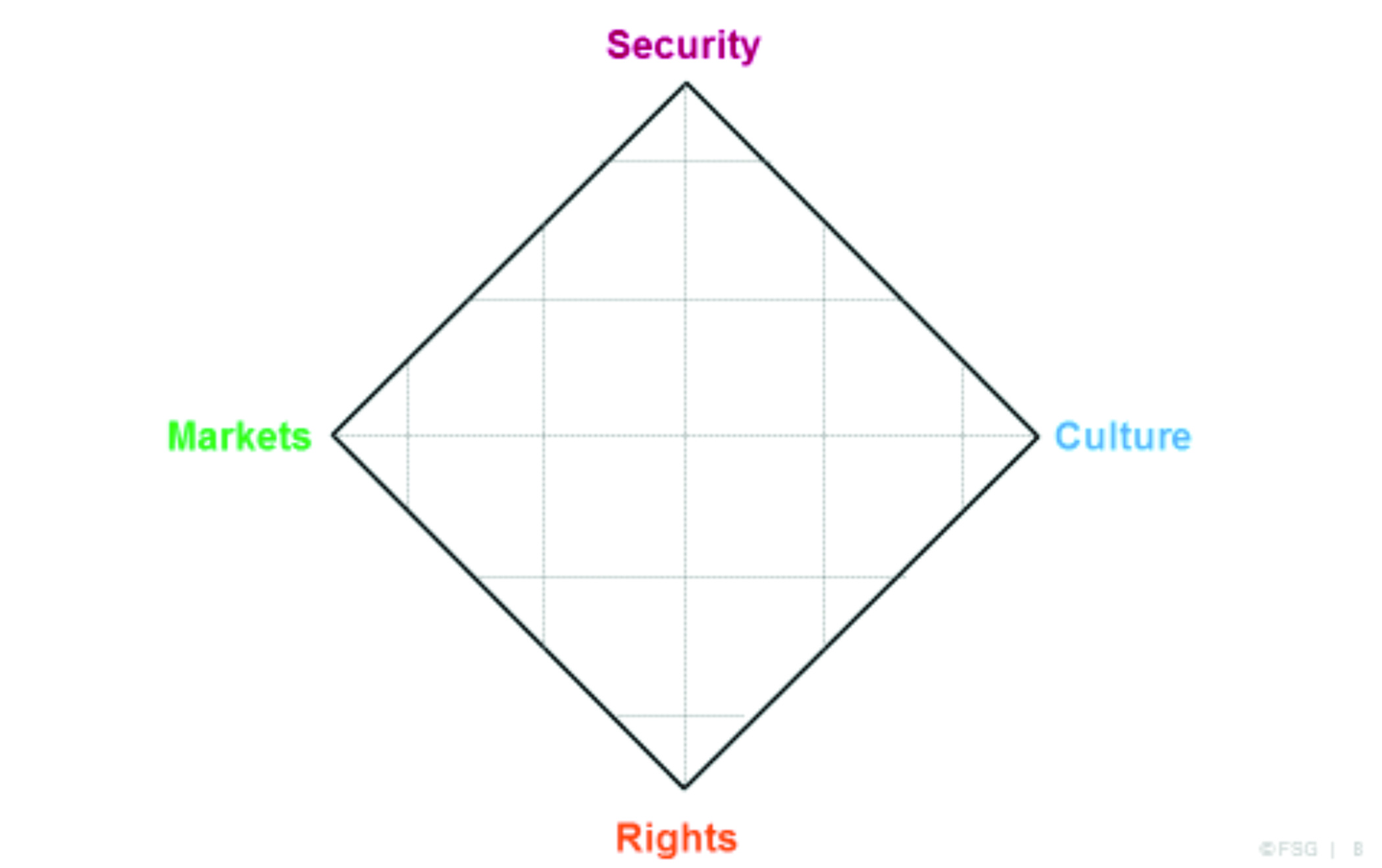
Figure 2. Foreign Population in the United States
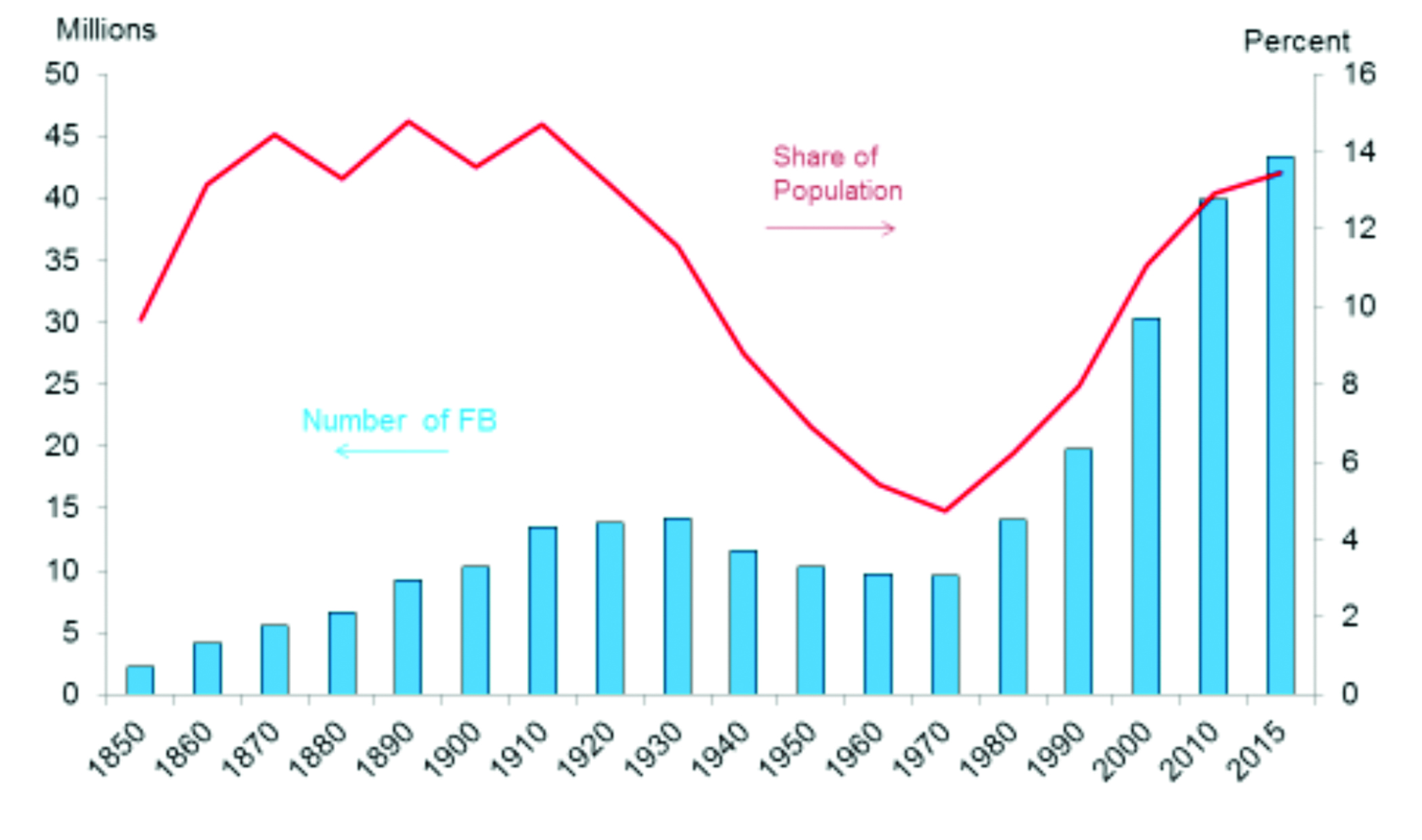
Figure 3. Status of Immigrants in the United States
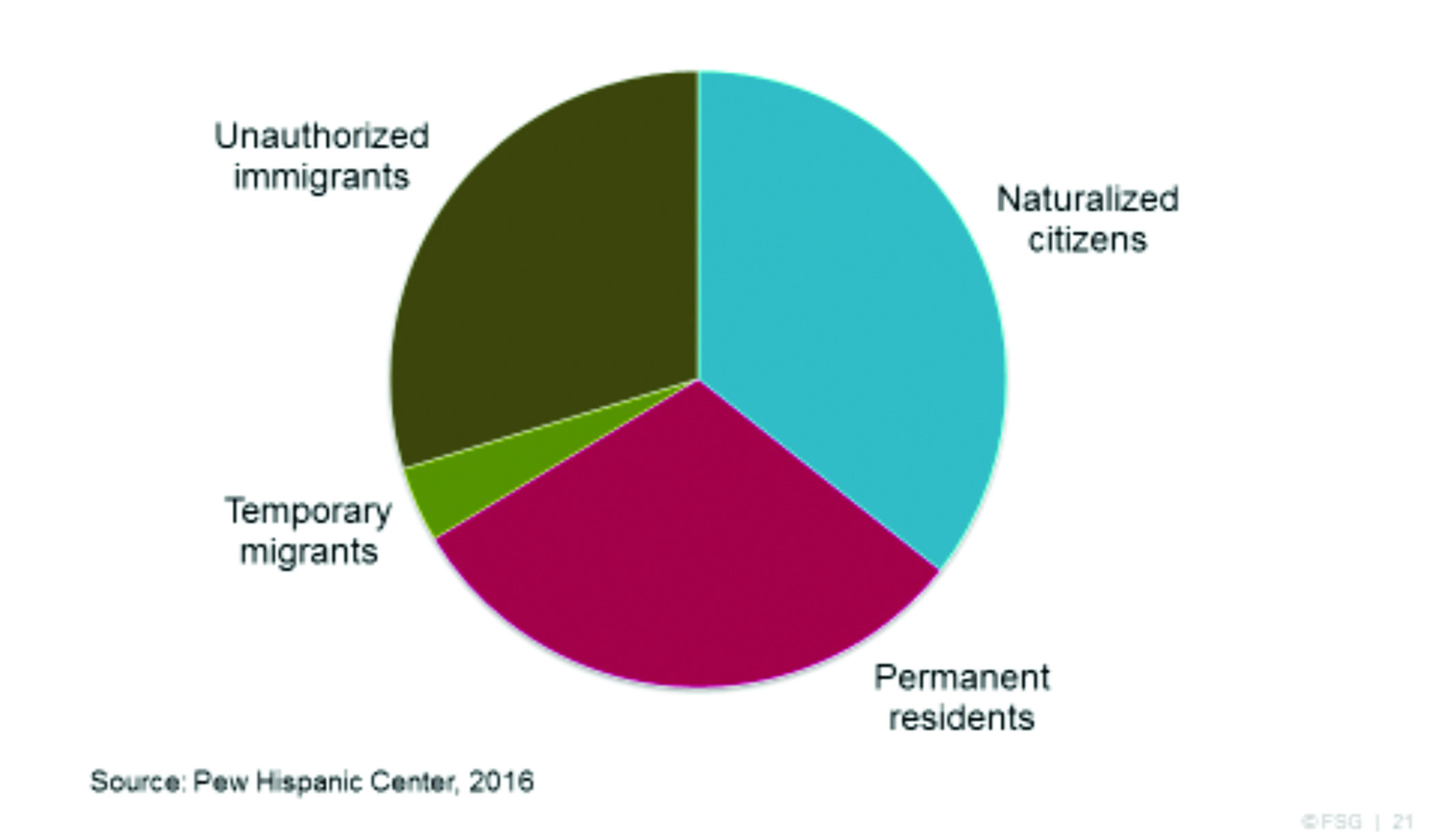
Figure 4. Immigration Flows by Status
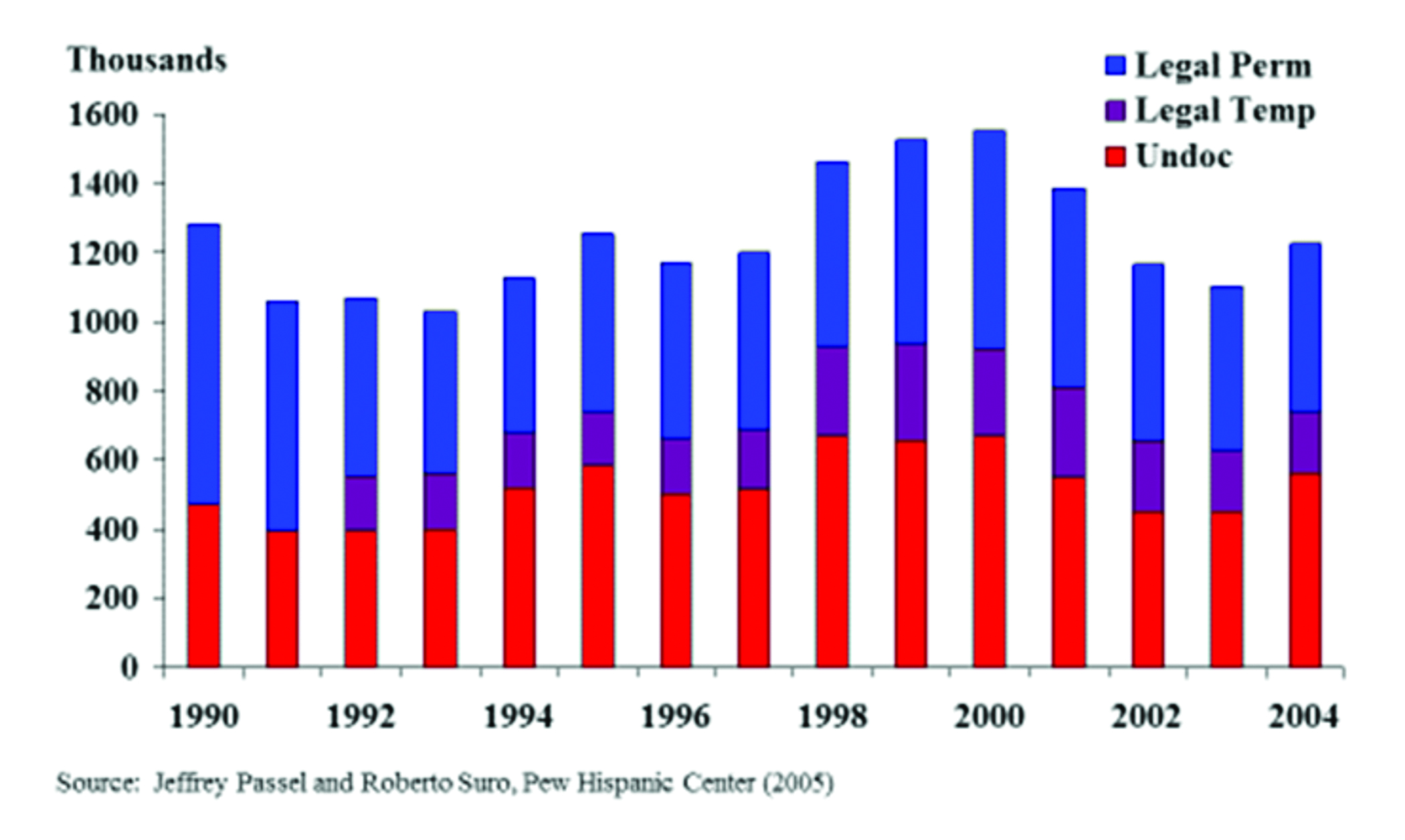
Figure 5. Unauthorized Immigration
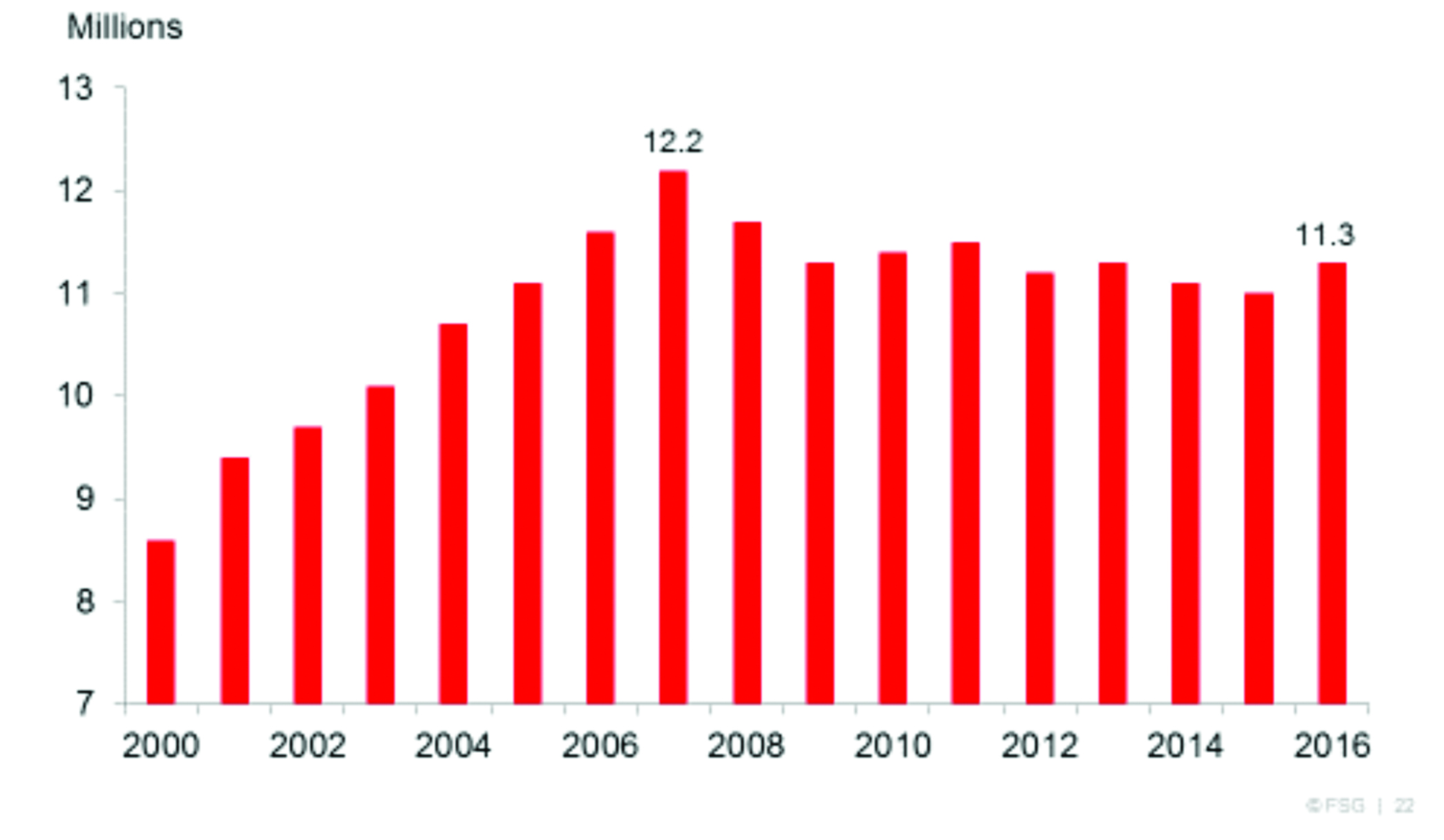
Figure 6. Shortage of Green Cards
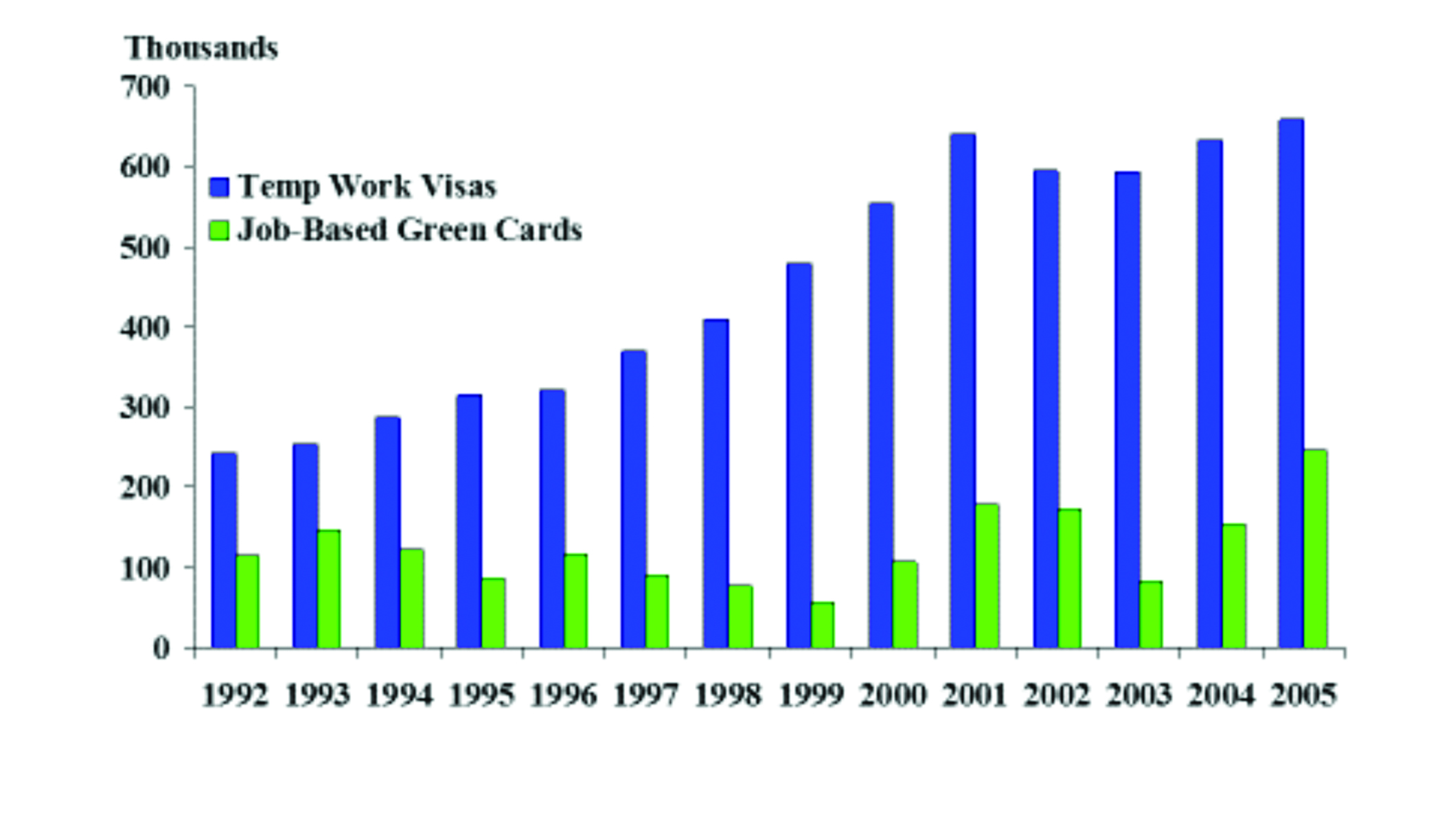
Figure 7. H-1B Visa Cap
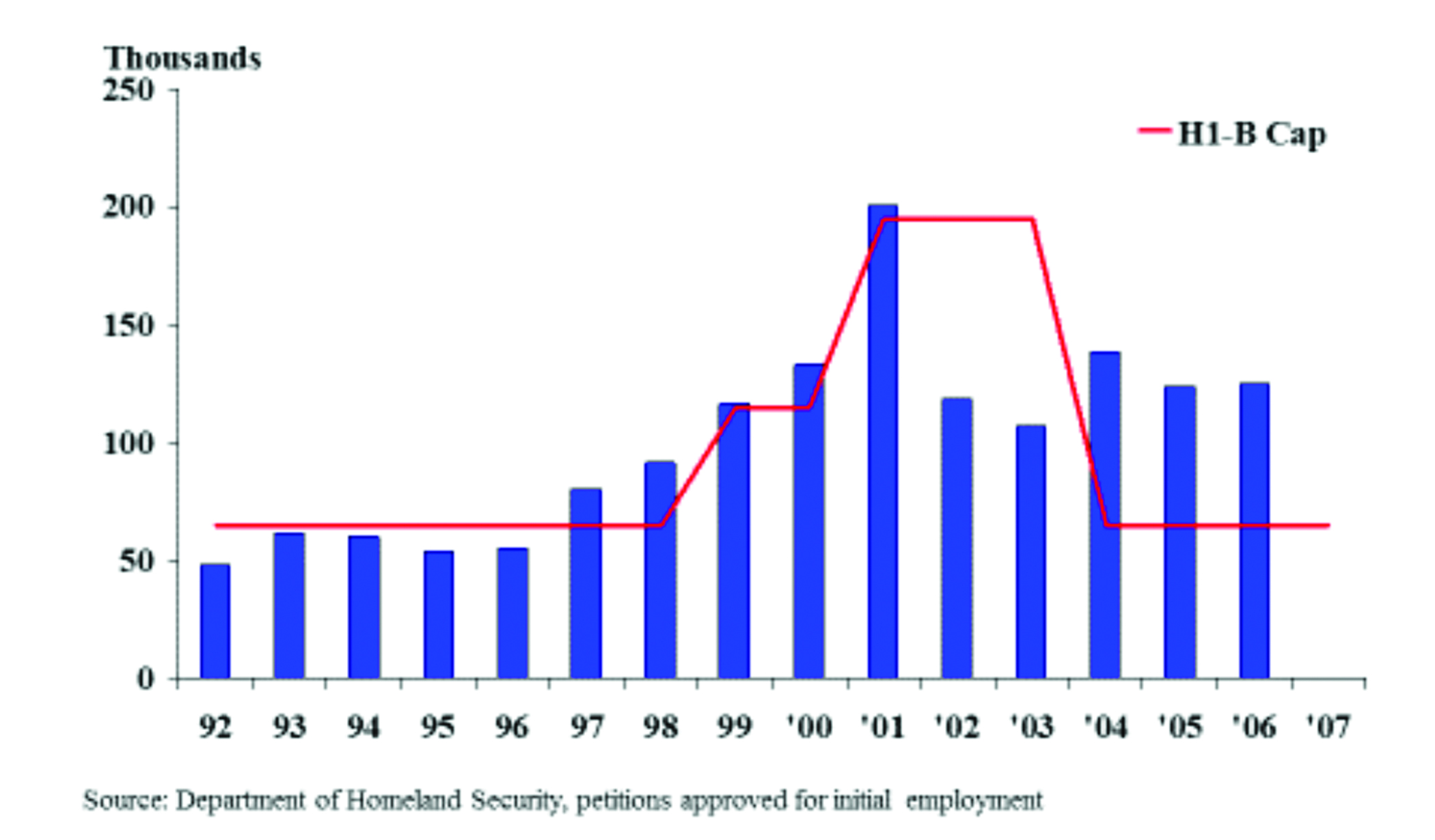
Figure 8. Employment and Immigration Diverge
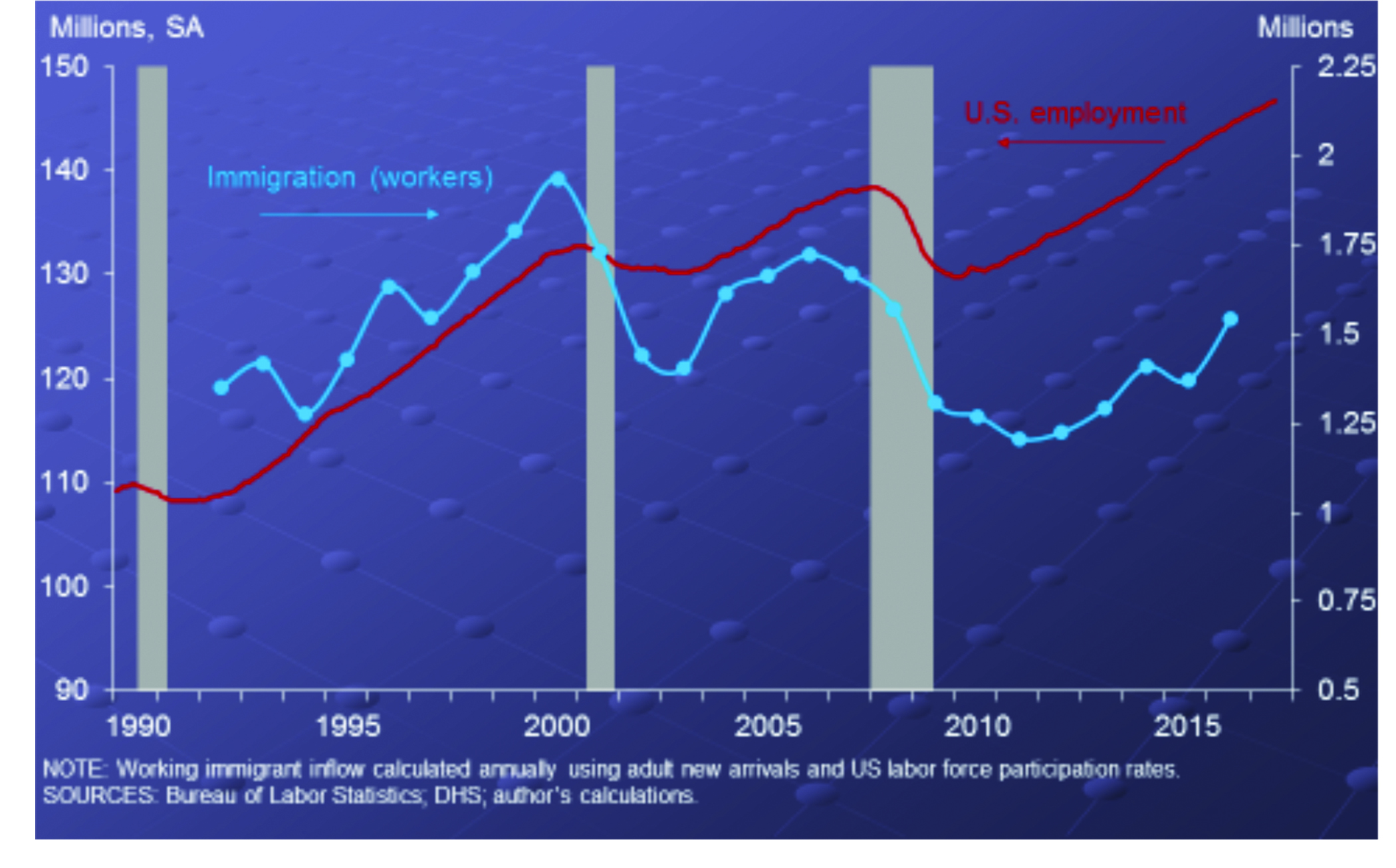
Figure 9. Immigrants Go Where Jobs Are Growing
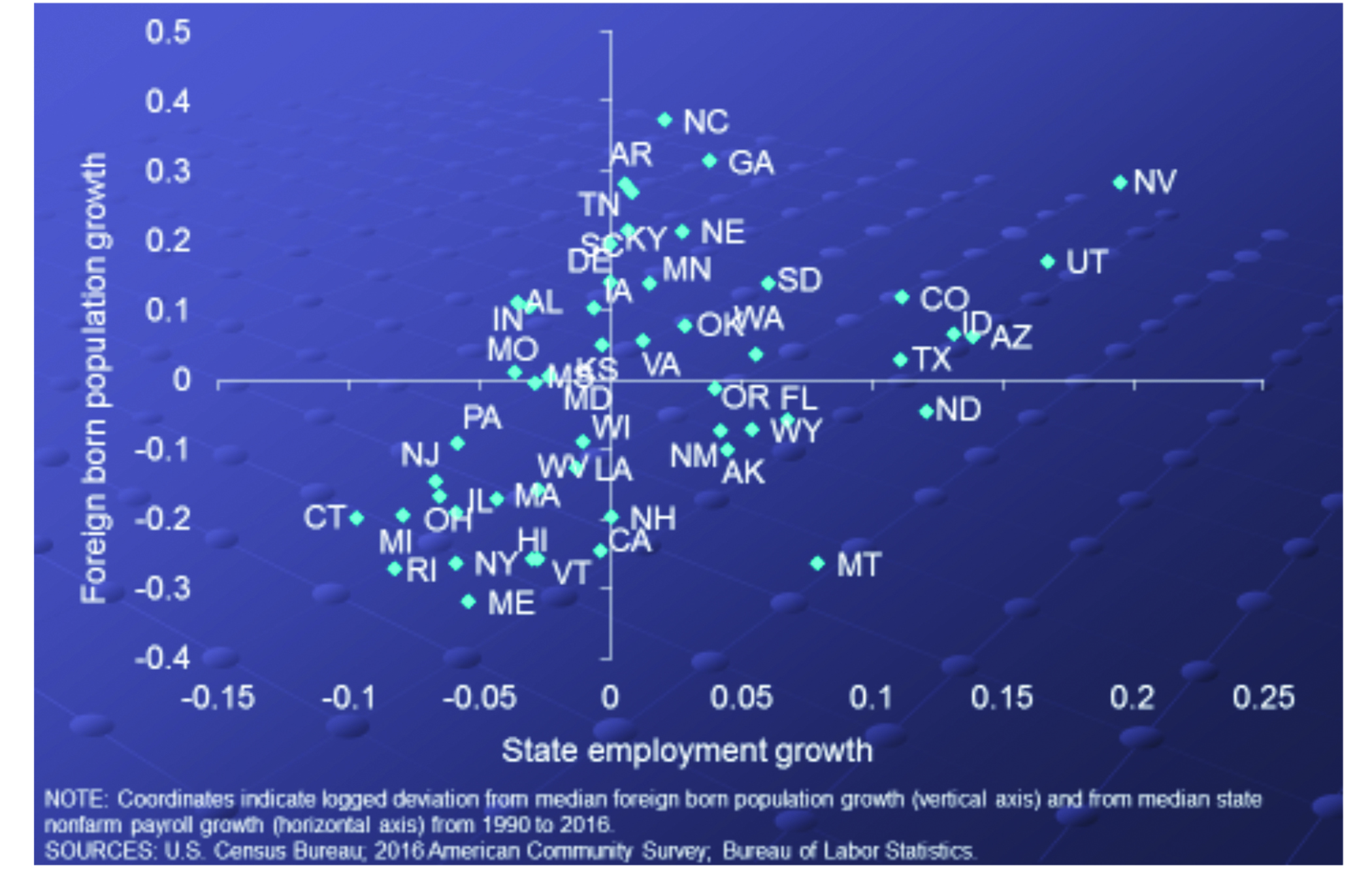
Figure 10. Fiscal Impact of Immigration, Age Is Key
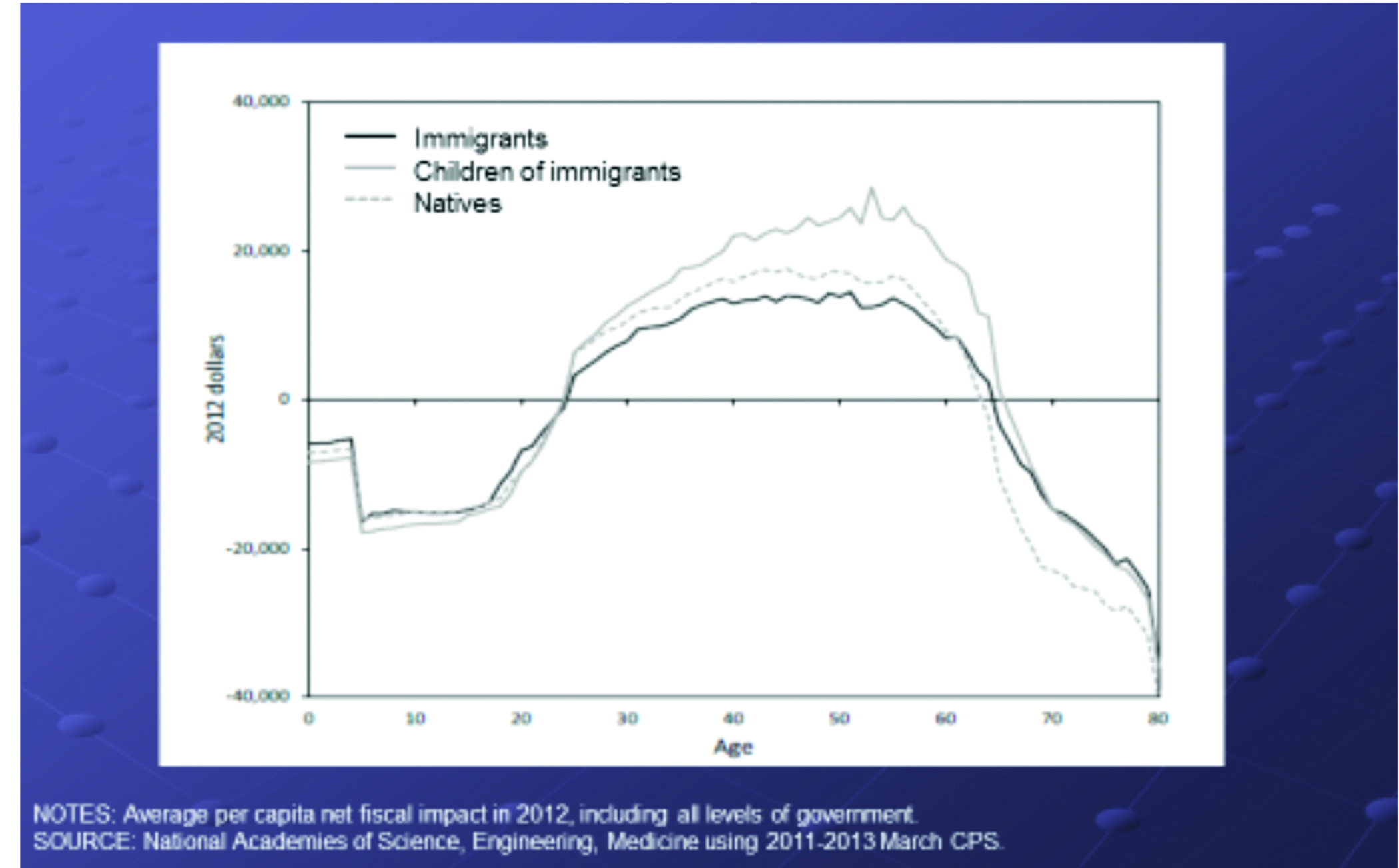
Figure 11. Immigration and Labor Market
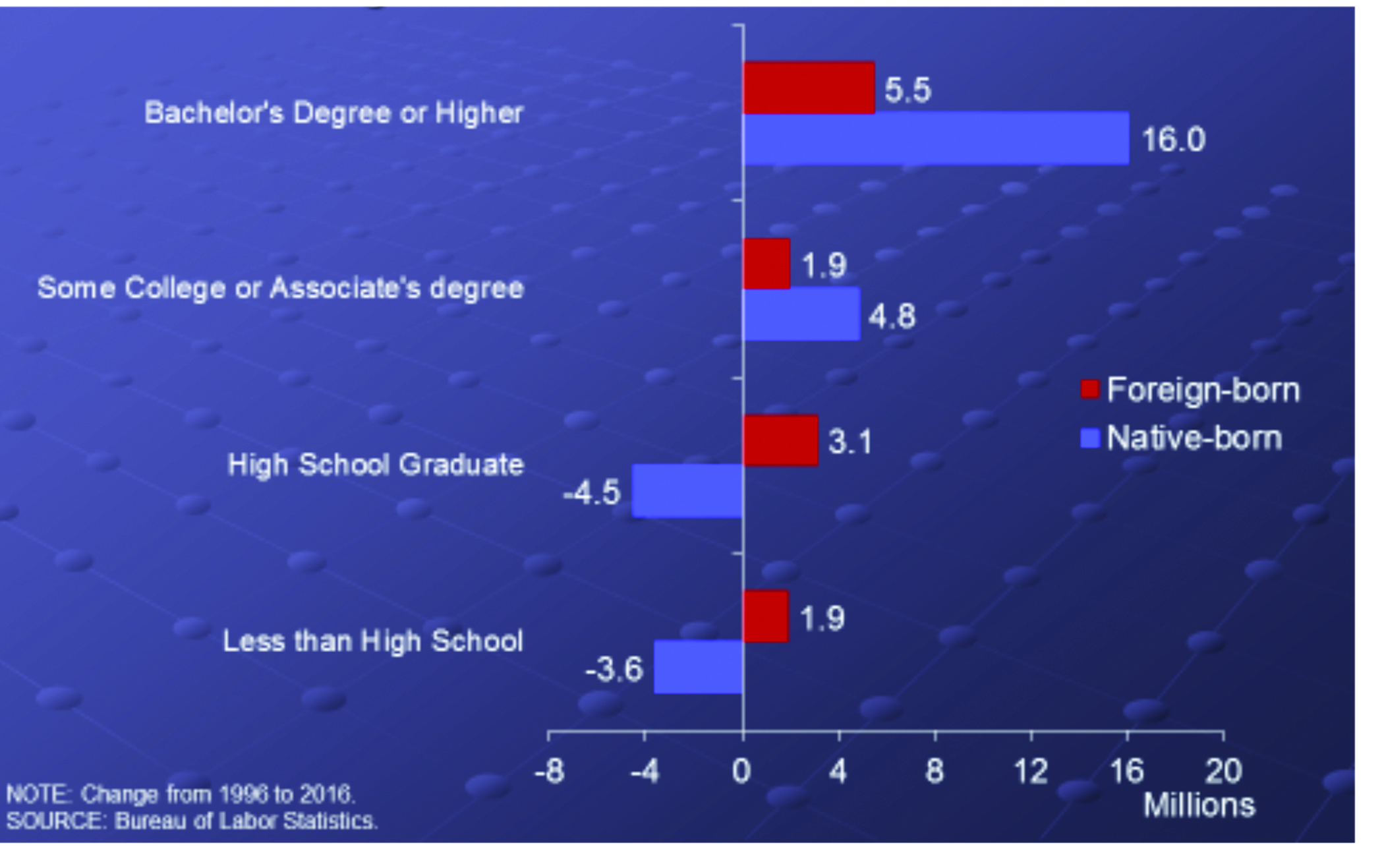
Figure 12. Foreign-Born Share of Labor Force
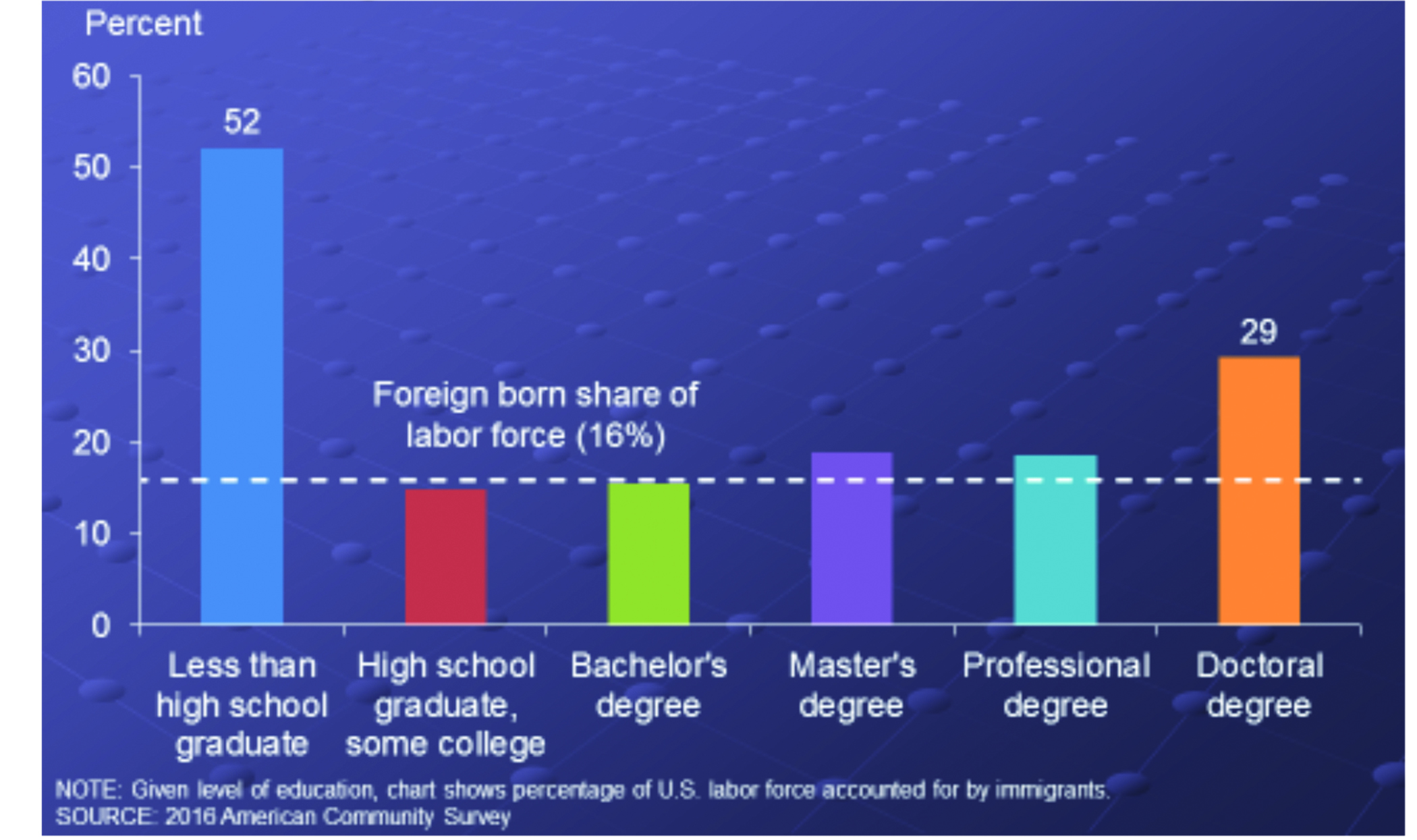
Figure 13. Foreign Born Concentrate in STEM Sectors
